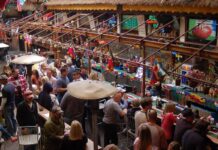Our helpful meme places the egg in Ishtar’s domain, but Ishtar doesn’t seem to be connected to eggs in any explicit way. However, there are plenty of other older traditions that involve the egg as a symbol of rebirth and feature it prominently in creation mythologies.
It is Easter Sunday, and for those honoring the day in terms of their religous beliefs, we wish you all the best. Meanwhile, pagans like your correspondent can (and will) make do with ham, chocolate and perhaps a nip of the grain to close the proceedings.
Many social media memes can be spotted that equate Easter with pagan fertility festivals. Speaking for myself, there is little doubt that early Christians incorporated aspects of existing belief systems to help bring adherents into the metaphorical tent. At the same time, memes by their very nature cannot dive deeply, and they often overstate the case by omitting the details.
Ten years ago at Scientific American, as part of its “Anthropology in Practice” section, there appeared an excellent overview of this topic, focusing on the role and meaning of eggs. For our informative Easter Sunday reading in 2023, here’s the link to Krystal D’Costa’s article from 2013.
Beyond Ishtar: The Tradition of Eggs at Easter
Don’t believe every meme you encounter.
Eggs occupy a special status during Easter observances. They’re symbols of rebirth and renewal—life bursts forth from this otherwise plain, inanimate object that gives no hint as to what it contains. In this regard it is a handy symbol for the resurrection of Jesus Christ, but it is is a symbol that has held this meaning long before Christianity adopted it.























